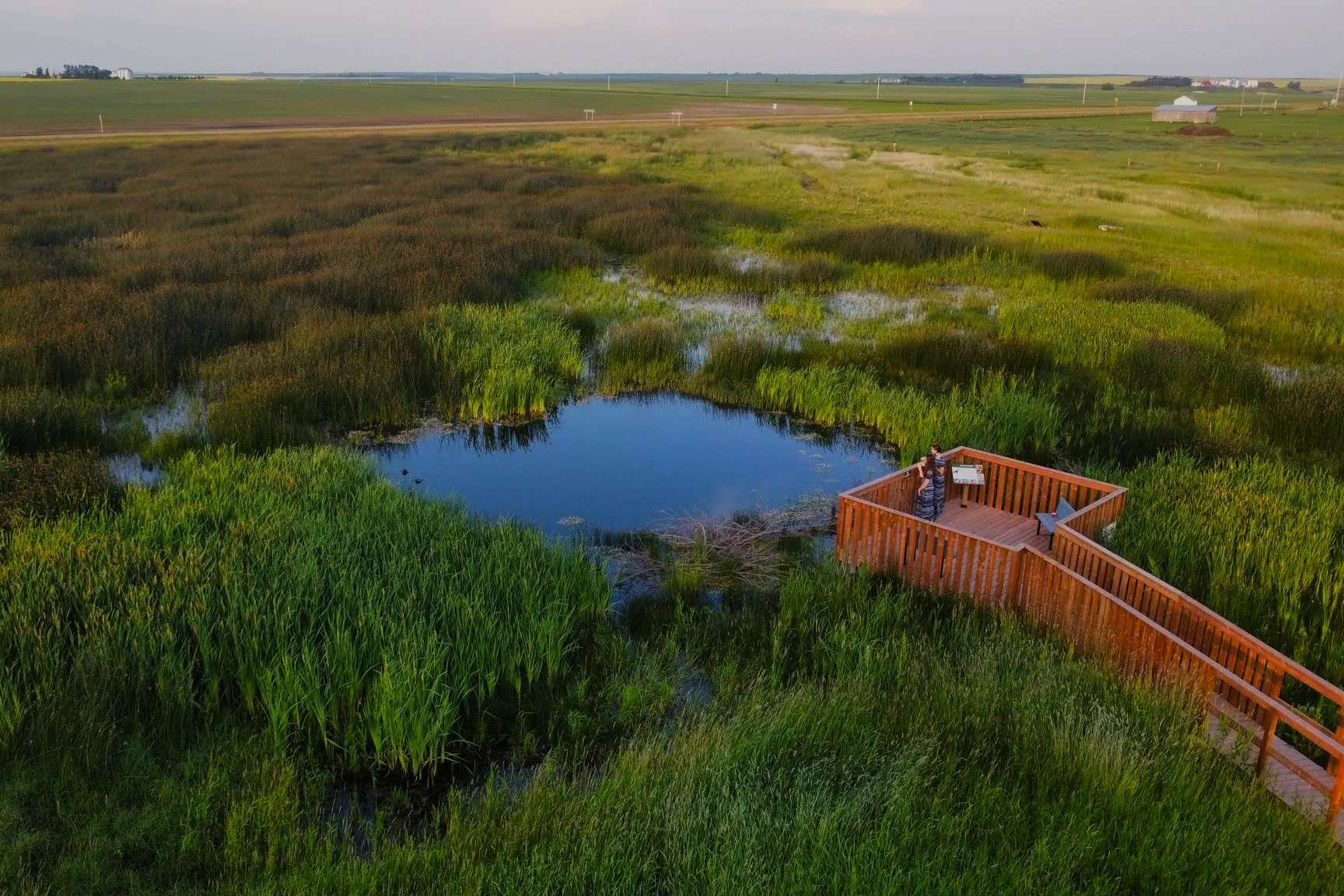Mystery Of Minnesota’s Prairie Potholes

Have you ever wondered why Minnesota's prairie potholes are so special? These unique wetlands, scattered across the landscape, play a crucial role in the environment. They provide habitat for countless species of birds, insects, and plants. During migration seasons, birds flock to these areas, making them a birdwatcher's paradise. Besides being a haven for wildlife, prairie potholes help filter water, reducing pollution in nearby lakes and rivers. They also act as natural sponges, soaking up excess rainwater and preventing floods. If you love nature and want to see something truly unique, Minnesota's prairie potholes are a must-visit.
What are Minnesota's Prairie Potholes?
Minnesota's prairie potholes are unique, shallow wetlands scattered across the landscape. These natural wonders formed thousands of years ago during the last Ice Age. They provide critical habitats for wildlife, especially migratory birds. Let's explore some of the most fascinating prairie potholes in Minnesota.
1. Glacial Ridge National Wildlife Refuge
Located in northwestern Minnesota, Glacial Ridge National Wildlife Refuge is one of the largest prairie restoration projects in the United States. This area boasts a diverse array of wildlife and plant species.
- Birdwatching Paradise: Home to over 200 bird species, including the rare greater prairie chicken.
- Hiking Trails: Miles of trails for hiking and wildlife observation.
- Educational Programs: Offers programs to learn about prairie ecosystems and conservation efforts.
2. Blue Mounds State Park
Blue Mounds State Park, situated in southwestern Minnesota, features stunning prairie landscapes and unique geological formations.
- Bison Herd: A small herd of bison roams the park, offering a glimpse into the past.
- Rock Climbing: The park's quartzite cliffs are popular among rock climbers.
- Wildflower Viewing: In spring and summer, the park blooms with colorful wildflowers.
3. Agassiz National Wildlife Refuge
Agassiz National Wildlife Refuge, located in northwestern Minnesota, is a haven for waterfowl and other wildlife.
- Wetland Habitats: Features a mix of marshes, swamps, and open water.
- Wildlife Observation: Spot moose, black bears, and a variety of bird species.
- Photography Opportunities: Capture stunning landscapes and wildlife in their natural habitat.
4. Big Stone National Wildlife Refuge
Big Stone National Wildlife Refuge, straddling the Minnesota-South Dakota border, offers a mix of prairie and wetland environments.
- Scenic Drives: Enjoy a leisurely drive through the refuge to see diverse habitats.
- Fishing: The refuge's lakes and rivers provide excellent fishing opportunities.
- Birdwatching: A prime location for spotting migratory birds, especially during spring and fall.
5. Sherburne National Wildlife Refuge
Sherburne National Wildlife Refuge, located in central Minnesota, is a mosaic of wetlands, prairies, and woodlands.
- Wildlife Drive: A seven-mile drive offers a chance to see a variety of wildlife.
- Hiking and Biking: Numerous trails for exploring the refuge on foot or by bike.
- Seasonal Events: Participate in guided tours and educational events throughout the year.
6. Glendalough State Park
Glendalough State Park, in west-central Minnesota, features pristine lakes and restored prairies.
- Camping: Offers both modern and rustic camping options.
- Canoeing and Kayaking: Paddle through the park's serene lakes and rivers.
- Nature Programs: Attend ranger-led programs to learn about the park's natural history.
7. Lac qui Parle Wildlife Management Area
Lac qui Parle Wildlife Management Area, located in western Minnesota, is a vital stopover for migratory birds.
- Hunting and Fishing: Popular for hunting waterfowl and fishing.
- Birdwatching: See thousands of snow geese and other migratory birds.
- Scenic Views: Enjoy panoramic views of the prairie and wetlands.
8. Rydell National Wildlife Refuge
Rydell National Wildlife Refuge, in northwestern Minnesota, offers a mix of forest, wetland, and prairie habitats.
- Accessible Trails: Features accessible trails for visitors of all abilities.
- Wildlife Observation: Spot deer, beavers, and a variety of bird species.
- Environmental Education: Provides educational programs and interpretive displays.
9. Tamarac National Wildlife Refuge
Tamarac National Wildlife Refuge, located in north-central Minnesota, is known for its diverse ecosystems.
- Auto Tour Route: A scenic drive through the refuge's varied landscapes.
- Fishing and Boating: Enjoy fishing and boating on the refuge's lakes.
- Wildlife Viewing: Look for black bears, wolves, and numerous bird species.
10. Prairie Wetlands Learning Center
Prairie Wetlands Learning Center, in Fergus Falls, Minnesota, focuses on environmental education and prairie restoration.
- Educational Programs: Offers hands-on learning experiences for students and visitors.
- Nature Trails: Explore the center's trails and observe prairie wildlife.
- Restoration Projects: Learn about ongoing efforts to restore and preserve prairie ecosystems.
The Beauty of Prairie Potholes
Minnesota's prairie potholes are more than just wetlands. They are vital for wildlife, water quality, and flood control. These natural wonders offer a unique glimpse into the state's ecosystem. Visiting these areas can be a rewarding experience for nature lovers and bird watchers alike.
Protecting these potholes is crucial. They face threats from agriculture, urban development, and climate change. Efforts to conserve and restore them are essential for maintaining their ecological benefits.
Next time you're in Minnesota, take a moment to appreciate these hidden gems. Whether you're hiking, birdwatching, or just enjoying the scenery, the prairie potholes offer a peaceful retreat. They remind us of the importance of preserving our natural landscapes for future generations.

